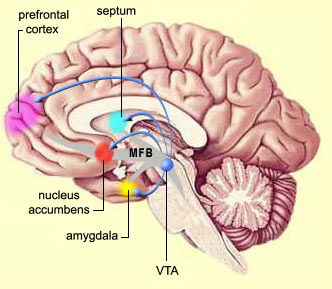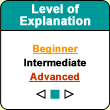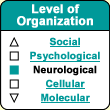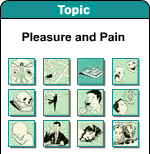|
|
|
Just beside the ventral tegmental area is another part of
the brain that contains a great deal of dopamine:
the
substantia nigra. The dopaminergic neurons
of the substantia nigra project their axons into the corpus
striatum, a region associated with the control of movement.
Essentially all of the dopamine that modulates brain activity comes from the ventral tegmental area and the substantia nigra. |
|
|
When
the cortex has received and processed a sensory stimulus indicating
a reward, it sends a signal announcing this reward to a particular
part of the midbrain–the
ventral tegmental area (VTA)–whose activity then
increases. The VTA then releases dopamine not
only into the nucleus accumbens, but also into the septum, the
amygdala, and the prefrontal cortex.
The nucleus accumbens then activates the individual’s
motor functions, while the prefrontal cortex focuses his or
her attention. |
|
 |
These regions are connected by what is called the pleasure or
reward bundle. In neuroanatomical terms, this bundle is part of
the medial forebrain bundle (MFB), whose activation
leads to the repetition of the gratifying action to strengthen
the associated pathways in the brain.
First described by James Olds and Peter Milner in the early
1960s, the MFB is a bundle of axons that originates in the
reticular formation, crosses the ventral tegmental area,
passes through the lateral hypothalamus, and continues into
the nucleus accumbens as well as the amygdala, the septum,
and the prefrontal cortex.
The MFB is composed of ascending and descending pathways, including most of the
pathways that use monoamines as a neurotransmitter. The mesocorticolimbic
dopaminergic system is one of its main components.
Consequently, the reward circuit and
the punishment circuit can be said to supply most of the necessary motivation
for most of our behaviours.
|
|





